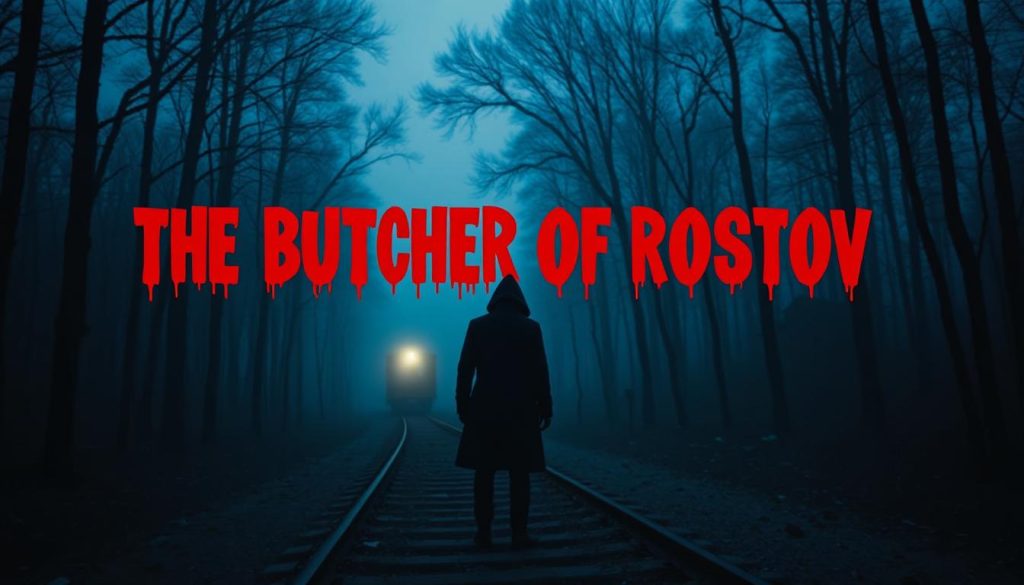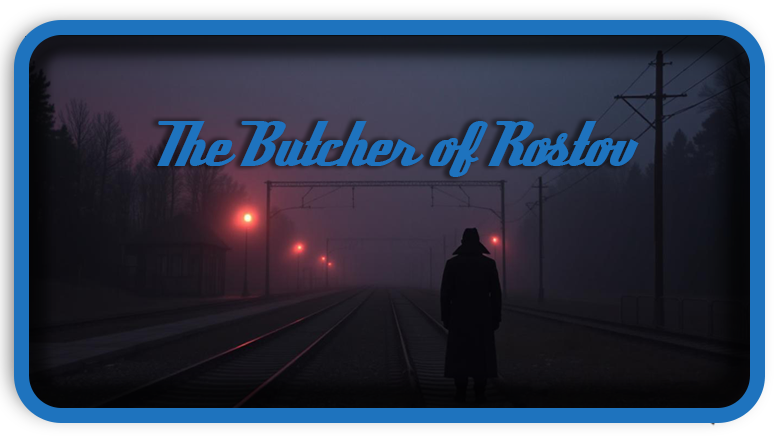⏲️ Estimated reading time: 4 min
Andrei Chikatilo – The Butcher of Rostov Exposed. Andrei Chikatilo, known as the Butcher of Rostov, murdered over 50 victims in the Soviet Union between 1978 and 1990. His horrifying crimes exposed critical failures in the justice system and left behind a legacy of fear and reform.
Andrei Chikatilo The Butcher of Rostov (Russia, 1978–1990)
A Serial Killer Hidden by Soviet Silence
During a time of secrecy and control, the Soviet Union failed to acknowledge that a serial killer could operate within its borders. From 1978 to 1990, Andrei Chikatilo committed over 50 gruesome murders. He targeted women and children, mutilating bodies and eluding capture through manipulation and gaps in the justice system.
Nicknamed “The Butcher of Rostov” and “The Red Ripper”, Chikatilo’s crimes shocked the nation. His story remains one of Russia’s darkest chapters in criminal history.
Chikatilo’s Troubled Childhood
Born in 1936 in a Ukrainian village, Chikatilo grew up during Stalin’s famine and World War II. Stories of starvation and cannibalism surrounded his early life. Poverty and emotional neglect shaped his personality.
As a teen, he suffered from social isolation and bullying. He also battled impotence and low self-esteem, factors that influenced his disturbing future.

First Murder: 1978
In 1978, Chikatilo lured a 9-year-old girl, Yelena Zakotnova, into a house and killed her. Though the evidence pointed to him, authorities arrested another man, Aleksandr Kravchenko. He was wrongly executed for the crime.
That error emboldened Chikatilo. Over the next decade, he killed dozens more mostly children and young women.
His Signature Method
Chikatilo lured victims from train stations, streets, and bus stops. He often offered food, money, or assistance. Once alone, he would attack them violently stabbing, mutilating, and sometimes cannibalizing them.
Each murder followed a pattern. He inflicted multiple stab wounds, gouged out eyes, and cut off body parts. These acts gave him sadistic pleasure and a sense of power.
The Investigation Fails
For years, the Soviet police failed to stop him. Communist ideology claimed that serial killers did not exist in their society. This belief delayed action and led to more deaths.
Officers arrested innocent men. Some received harsh sentences, including death. These errors helped Chikatilo continue undetected.
Forensic Breakthrough
By the late 1980s, authorities finally accepted they needed help. They turned to forensic psychologist Dr. Aleksandr Bukhanovsky, who created a detailed profile of the killer.
In 1990, police noticed Chikatilo behaving oddly at a train station. He approached young people without reason. Surveillance and prior suspicions led to his arrest.
Trial and Execution
His 1992 trial became a spectacle. Enclosed in a metal cage, Chikatilo behaved erratically. He sang, shouted, and exposed himself, hoping to appear out of control.
The court didn’t buy his act. He confessed to 56 murders, though authorities proved only 53. In 1994, he faced execution shot in the back of the head.
Impact on Russia
Chikatilo’s crimes exposed deep flaws in the Soviet system. Police incompetence, political denial, and a lack of forensic support let a killer operate freely for over a decade.
His case forced the justice system to change. Russia began to use psychological profiling and modern forensic tools to prevent future failures.
The Victims Deserve Remembering
More important than the killer’s story are the lives he stole. Each victim had dreams, families, and futures. Children trusted him. Women hoped for help. Their pain, and the grief of their families, should not fade from memory.
Understanding the Mind of Chikatilo
Psychologists diagnosed him with antisocial personality disorder and sexual sadism. He couldn’t form healthy relationships or control his violent urges. Unlike many violent criminals, he held a job, raised a family, and appeared ordinary.
This duality normal on the outside, monstrous within made him particularly dangerous.
Lessons for the Future
Modern Russia now has stronger forensic science and law enforcement protocols. Yet Chikatilo’s crimes warn us that evil can grow in silence. When systems fail, killers thrive.
Understanding his story helps prevent future horrors and ensures that no society ignores the signs again.
🔔For more tutorials like this, consider subscribing to our blog.
📩 Do you have questions or suggestions? Leave a comment or contact us!
🏷️ Tags: Andrei Chikatilo, Butcher of Rostov, serial killers, Soviet Union crimes, Russian crime history, true crime stories, forensic profiling, child murders, criminal psychology, Red Ripper
📢 Hashtags: #AndreiChikatilo, #SerialKillers, #TrueCrime, #ButcherOfRostov, #RussiaCrime, #CriminalProfiling, #SovietHistory, #ForensicPsychology, #CrimeInvestigation, #MurderCases
Final Reflection
Andrei Chikatilo’s story is a chilling reminder of how darkness can hide in plain sight. His reign of terror wasn’t just about individual evil it also reflected systemic failures. His victims must never be forgotten, and his crimes must always serve as a lesson for vigilance, reform, and justice.
Only logged-in users can submit reports.
Discover more from HelpZone
Subscribe to get the latest posts sent to your email.

